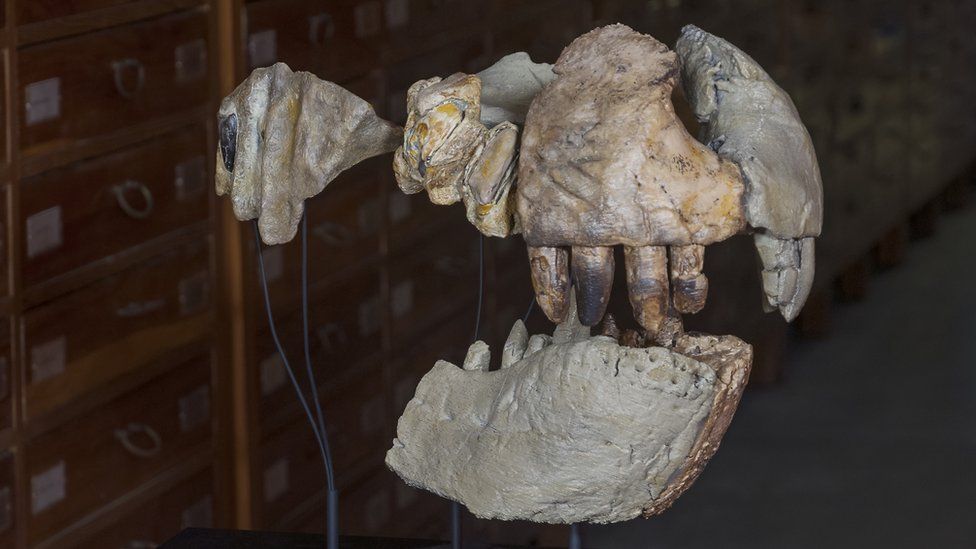Named Razanandrongobe sakalavae, the ancient predatory crocodile had a deep skull and powerful jaws with enormous serrated teeth that are similar in size and shape to those of Tyrannosaurus rex, according to new research led by Dr. Cristiano Dal Sasso of the Natural History Museum of Milan.

Razanandrongobe sakalavae scavenging on a sauropod carcass. Unlike extant crocodilians, this animal walked on erect limbs. Image credit: Fabio Manucci.
Razanandrongobe sakalavae (means ‘giant lizard ancestor from Sakalava region’) lived during the Middle Jurassic epoch, 168-165 million years ago, in what is now Madagascar.
The crocodile-like beast is by far the oldest — and possibly the largest — representative of Notosuchia, a large group of terrestrial crocodylomorphs that lived during the Jurassic and Cretaceous.

“Little is known about the origin and early evolution of Notosuchia,” Dr. Dal Sasso and co-authors said.
“Our research begins to fill the gap in a million-year-long ghost lineage.”
The team examined the cranial bones and teeth of Razanandrongobe sakalavae collected from the Middle Jurassic layers of the Sakaraha Formation, Mahajanga Basin, northwestern Madagascar.

Paleontologists Cristiano Dal Sasso (left) and Simone Maganuco (right) standing next to the jaws of Razanandrongobe sakalavae at the Natural History Museum of Milan, Italy. Image credit: Giovanni Bindellini.
Paleontologists had previously identified the species as a member of Archosauria, a group of reptiles that first appeared in the Late Permian.
“A combination of anatomical features clearly identifies Razanandrongobe sakalavae as a Jurassic notosuchian, close to the South American baurusuchids and sebecids, that were highly specialized predators of terrestrial habits, different from present-day crocodilians in having a deep skull and powerful erect limbs,” Dr. Dal Sasso said.

“Like these and other gigantic crocs from the Cretaceous, Razanandrongobe sakalavae could outcompete even theropod dinosaurs, at the top of the food chain.”
The diet of Razanandrongobe sakalavae included hard tissue such as bone and tendon, according to the researchers.
“Razanandrongobe sakalavae represents one of the earliest events of exacerbated increase in body size along the evolutionary history of the group,” they said.

“Its geographic position during the period when Madagascar was separating from other landmasses is strongly suggestive of an endemic lineage.”
“At the same time, it represents a further signal that Notosuchia originated in southern Gondwana,” said co-author Dr. Simone Maganuco, also from the Natural History Museum of Milan.
Source: sci.news








